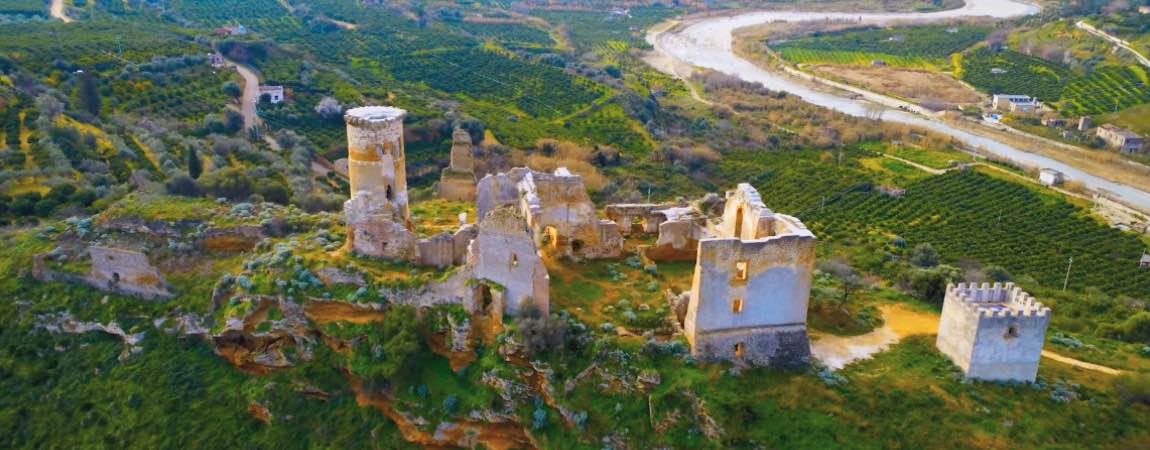
A lively and populous city, Ribera is the bearer of a fascinating history that unwinds for many centuries, as evidenced by the archaeological heritage and historical evidence.
The area where Ribera stands today was also inhabited in prehistoric and protohistoric times: evidence of this is the fascinating Necropolis of Anguilla, from the name of the homonymous district of Ribera.
Formerly called “Allava”, made fertile by the rivers and overlooking the sea, the Ribera plain bears other evidence of how that fertile land attracted the industriousness of the laborers: among these, the Poggiodiana Castle, of which important vestiges remain.
It is in the XNUMXth century that the owner of numerous and large fiefdoms, the Prince of Paternò Louis William I Moncada, took the decision to build a city for the benefit of the numerous laborers active in the area, who until then had been forced to make heavy daily journeys, which added to the fatigue of working in the fields. This is how in the 1635 Ribera is founded: the name is a tribute of love from the Prince towards his wife, Maria Afan de Ribera, daughter of the Duke of Alcala. A notarial deed marks the official date of birth of the new municipality: it is 25 February 1636.
Ribera's development in the XNUMXth century
Demographic growth e religious devotion characterize Ribera in the century following its foundation: new places of worship, new homes, the expansion of the town into the area delimited by the rivers Vegetables, Warehouse e platani, and from the sea. Ribera becomes completely independent from Caltabellotta, and is increasingly establishing itself as an important center of agricultural production, employing more and more manpower and attracting new workers from other areas.
Political passions and peasant struggles in Ribera
Over the centuries, Ribera has established itself as the fulcrum of Sicilian rice production, the main one in terms of quantity rice produced on the island. Work leads to a notable increase in the population, engaged in hard work and oppressed by disease.
The first political fervor was therefore born, with claims against the large estates which led, in 1848, to widespread mass participation in the independence revolution of which one of the leaders was the Riberese himself. Francesco Crispi, future head of government and Italian minister. The rice fields are eliminated, as they cause serious diseases such as malaria and cholera, and replaced by other crops.
The peasant struggles continued in the following century: "Great War", which took many hands away from working in the fields, was the driving force behind the birth of the first cooperatives, which were pitted against the landowners, who obtained the support of the increasingly consolidated mafia gangs. He also dealt with the “Ribera facts”. Antonio Gramsci in his writings developed during his imprisonment under fascism.
The conclusion of the large estate finally came after the Second World War: the victory of the left in the municipal elections led to the reorganization of uncultivated lands and a clear one recovery of economic and social progress.
Ribera today
Ribera today is a center to which the strong agricultural and rural roots give foundation growing tourist vocation: the versatility of a center rich in history ed attractions for everyone, added to a mild and hospitable climate, make it the ideal place for a holiday, to include in your itineraries above Sicilyintour.com. Continue to follow us on social media, to stay updated on all the news in Ribera and in the rest of the world Sicilia.









